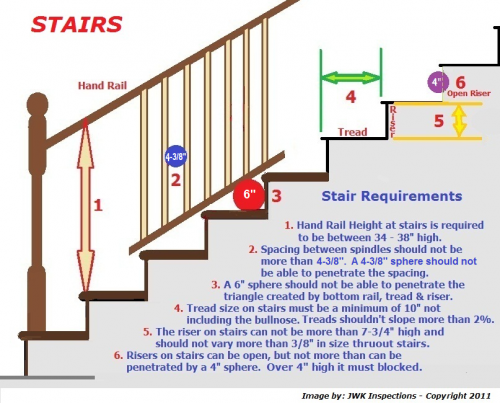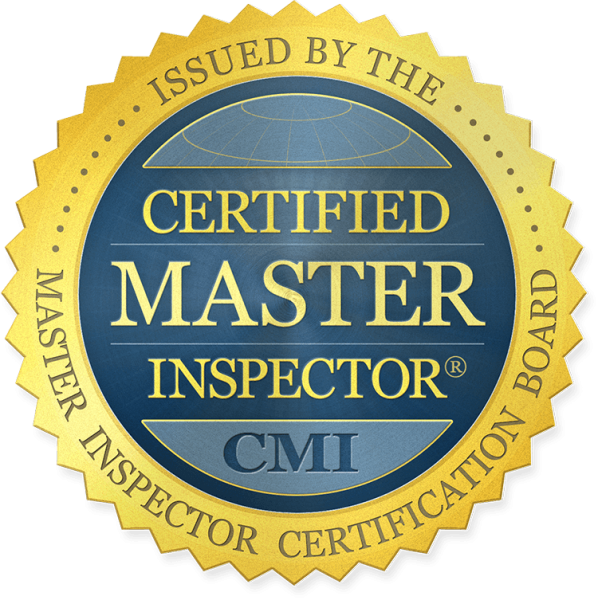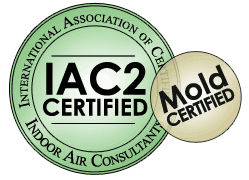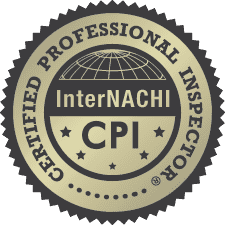Stair Safety
Stairs are a necessary, convenient invention that have been a part of our lifestyle, probably since the beginning of time. Unfortunately, they have caused personally injury and even death in far too many instances since then, even though proper design and safety precautions have been implemented for 75 years or so. Studies indicate that yearly deaths from stair falls exceed swimming pool and bathtub drownings combined, and expenses and medical costs from stair falls are second only to vehicle accidents. Stairs in the home can be one of the most dangerous places for anyone, in particular, for the elderly, handicapped and young children. Even older children who can navigate stairs may tend to play on them, jump off, or otherwise misuse them, causing potential injury. Stairs can create the opportunity not only for accidents, but for potential liability. The two most basic parts to stair safety include keeping children who are too young to navigate stairs from reaching the staircase, and making the staircase as safe as possible for those who do travel up and down them.
Safety Gates
There are two basic mechanisms to install safety gates: those that work by pressure and those that are hardware mounted to a wall or door frame. Pressure gates are not safe for the top or bottom of stairways, and are not recommended for stair safety. Mounted gates, which swing open and closed or retract into a holder, and are secured by a variety of mechanisms, are the kind of gate you should use to keep children off of staircases.
It is absolutely imperative that any adult and older child in the house can open the safety gate easily in case an emergency arises. In case of a fire or other emergency that necessitates a quick evacuation, you don't want a bottleneck caused by a difficult gate at the top of the stairs. At the same time, it is necessary that the child who is being guarded can neither open the gate nor climb over it. Check the area carefully for anything that the child could use as a step up to get a purchase on the gate and go up and over. A clever child can turn a stuffed animal into a stepping stool, and they will.
In the past, accordion style gates were used, but they are no longer recommended or manufactured: children may get pinched or otherwise caught in them. Gates with slats should follow the same standard as for cribs, i.e., no more than 2 3/8” (6.03 cm) between slats. They say curiosity killed the cat, but many a child will be curious, for some reason, to see if his/her head will fit through the slats.
Voluntary standards for safety gates are set by the American Society of Testing Materials (ASTM) and administered by the Juvenile Products Manufacturer’s Association (JPMA). Look for the JPMA approval on any safety gate you consider purchasing.
There are many ways to make your stairs safer. Some of them include making sure they are well lit, and handrails on each side to accommodate two people passing on them. They should be clear of obstructions, throw rugs, and loose carpeting. Carpeted stairs should be checked periodically and tacked when pulled loose. Wood stairs should not be waxed.
Some specific step requirements are displayed in the following diagram. Thanks to Joe Keresztury of JWK Inspections, a friend and colleague who performs Home inspections in San Antonio, TX. His web pages and blogs are full of useful information. Just click on my "links" button and find www.jwkinspections.com in theTexas area. If these measures are taken and followed, your stairs will be a little safer. Of course, the best stair safety practices are quite simple- pay attention and be careful. Or take your parents' advice “Watch where you're going”.

![]()










